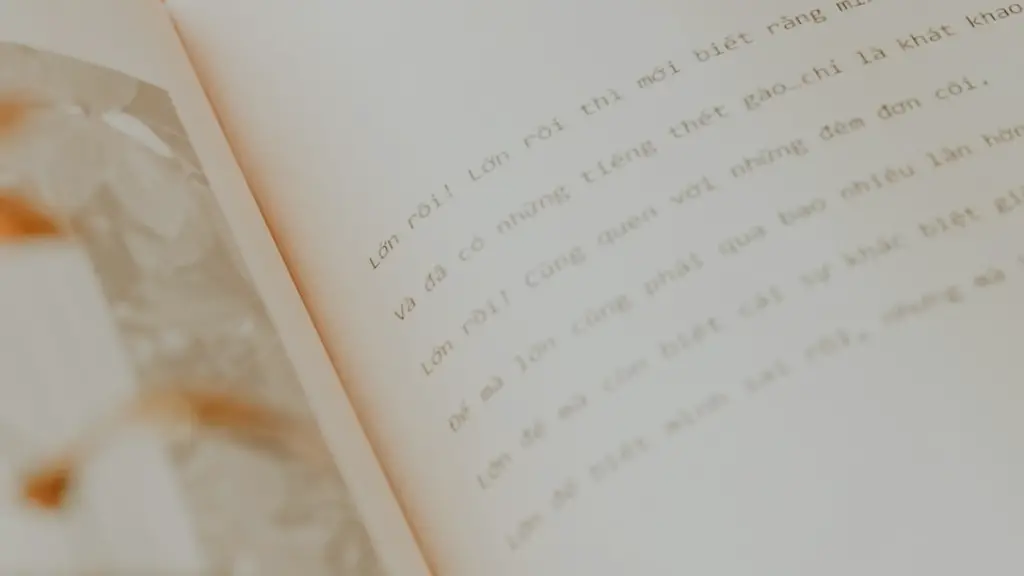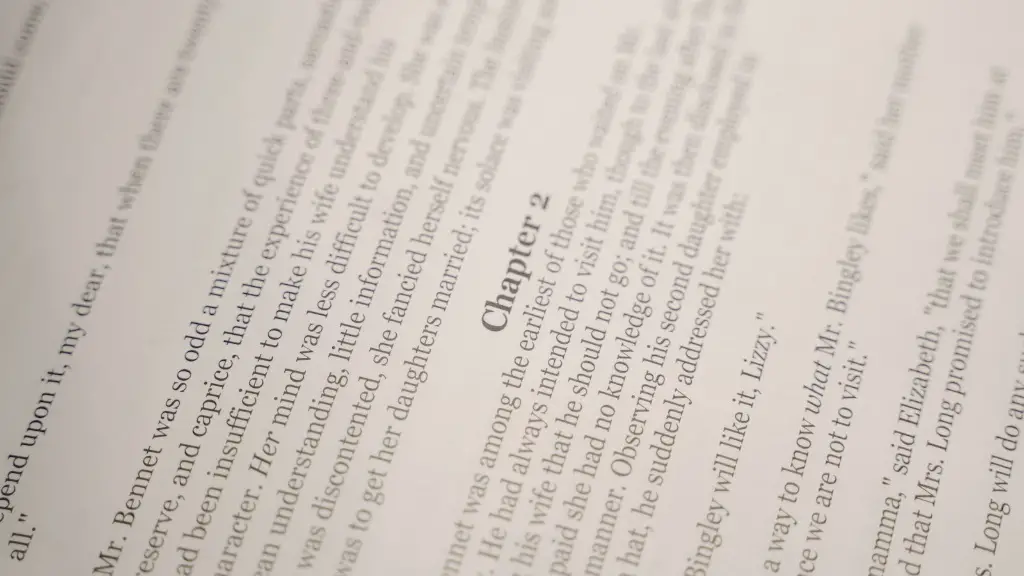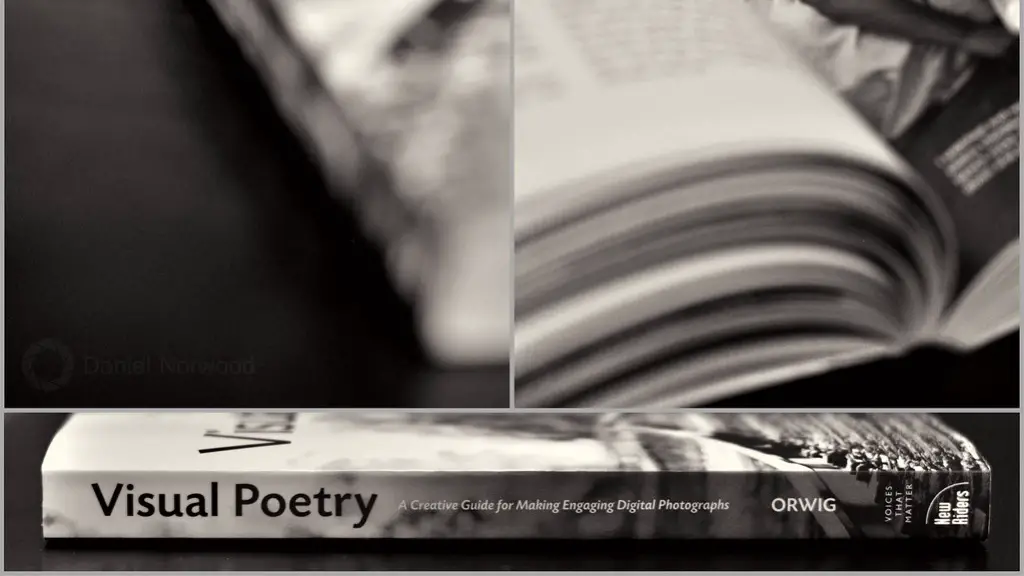The Background of “A Song for Occupations” by Walt Whitman
Walt Whitman penned the poem “A Song for Occupations” in 1858 when he was still working as a newspaper journalist. He was inspired to write the piece after observing the daily hustle and bustle of New York City. He used the city as a metaphor for his poem, referencing the many different people going to work each day and performing their various occupations.
The poem itself is a celebration of the many different occupations, praising the beauty and importance of all types of work. He praises farmers, laborers, and artisans alike, mentioning them all as worthy of a song. He emphasizes the role of the public in keeping the economy healthy, championing the idea of contributing to the greater good.
Important Themes in “A Song for Occupations”
One of the key themes in “A Song for Occupations” is the idea of respect for all kinds of work, regardless of status or pay grade. Whitman argues that every kind of occupation, whether it is a farmer’s work or that of a factory worker, should be respected. Everyone should be given their due and their contribution should be appreciated in its own way.
Another important theme in the poem is the idea of camaraderie amongst the different occupations. Here, Whitman is calling for everyone to work together in order to build a successful society. He emphasizes the importance of collaboration between occupations in order to make sure that the collective effort is a success. He also calls for a sense of pride and camaraderie amongst all the different working classes, calling on them to unite together.
The Language of “A Song for Occupations”
The language used in this poem is lyrical and repetitive. Whitman employs a strong swaying rhythm throughout, which helps to make it memorable. He uses vivid imagery and metaphors to emphasize the beauty of work, equating it to the beauty of nature. He also uses personification to imbue ideas of life and vitality into his descriptions of both nature and the people performing the various occupations.
In terms of syntax, Whitman uses a mix of short and long sentences. He often intersperses short, snappy lines with longer, more drawn out musings. This helps to capture the idea of movement and progress throughout the poem, but it also helps to give it its poetic rhythm.
A Close Reading of “A Song for Occupations”
One of the most striking aspects of this poem is the description of the sun. The sun is mentioned multiple times, and each time it seems to represent a different idea. In the opening lines, Whitman talks of how the sun travels around the earth, tying the beauty of nature to the beauty of work. The sun here is seen as a life-giving force which carries us forward, emphasizing the idea of movement and progress.
The sun is also used to describe the way in which the poem moves from occupation to occupation. In the third stanza, Whitman talks about how the sun moves across the sky, illuminating each worker in turn. Here, the sun is representative of our focus, as it moves from one worker to the next, showing us different aspects of the working world.
Finally, the sun also stands in for optimism and hope. In the sixth stanza, Whitman talks of how the sun carries a song of hope and joy, which uplifts the workers in their work. Here, the sun is used as a symbol of positivity and optimism, providing us with new energy and inspiration.
Analysis of “A Song for Occupations”
Overall, “A Song for Occupations” is an ode to the hard-working people of the working world. It celebrates their determination and devotion to their various occupations, praising them as worthy of a song. Whitman takes care to emphasize the importance of collaboration and camaraderie amongst the different working classes, highlighting the need for everyone to work together in order to build a successful and productive economy.
The language of the poem, with its lyrical structure and vivid imagery, helps to emphasize the idea of respect for the different occupations. Whitman also makes use of personification and repetition, imbuing the poem with a strong sense of rhythm and movement.
Finally, the imagery of the sun provides us with a sense of optimism and hope, helping us to look at the beauty of all kinds of labor, regardless of status or pay grade. Whitman encourages us to appreciate the value of all kinds of work, and to be thankful for the hard work of those around us.
Relationship to Other Works by Walton Whitman
The themes in “A Song for Occupations” are similar to those explored in other works by Walter Whitman. These include poems such as “I Hear America Singing” and “Beat! Beat! Drums!” In both of these poems, Whitman celebrates the power of work and the collective spirit of the nation. He emphasizes the importance of respect for the different occupations and the dignity of the working classes.
In addition, Whitman’s vision of the beauty of work can also be seen in his novel Leaves of Grass. In this work, Whitman uses the metaphor of a garden to describe the different facets of work. He talks of workers tending to their crops and plowing the fields as a metaphor for educating and nurturing the nation.
Reception of “A Song for Occupations”
“A Song for Occupations” has been widely praised by critics and scholars alike. It has been heralded as a celebration of work and the collective spirit of the nation. In addition, many have noted the lyrical quality of the poem, commenting on its ability to capture the beauty of the different occupations.
The poem has also been seen as a call to action. Whitman’s message that all types of work should be respected and appreciated resonates with many readers. He emphasizes the need for working together and striving for a better society, which is a message that still resonates today.
The Impact of “A Song for Occupations”
The message of “A Song for Occupations” is still relevant today. Those in the working world can relate to Whitman’s tribute to the beauty and dignity of work, regardless of its status or pay grade. The poem serves as a reminder of the importance of respect for all kinds of labor, and of the idea of camaraderie amongst coworkers.
The poem has also been seen as an influential work in the growth of American literature. It helped to usher in a new era of literature which celebrated the working classes and their contributions. Its emphasis on collaboration and camaraderie also served as an inspiration to many of the great works of fiction which followed.
Interpretation of “A Song for Occupations”
At its heart, “A Song for Occupations” is a tribute to the hard-working people of America. It celebrates the beauty and dignity of all types of labor, and calls for respect for the different occupations. Whitman’s focus on collaboration and camaraderie is a reminder of the importance of working together to ensure the success of society.
The poem also serves as a call to action. Whitman encourages us to appreciate the hard work of others, and to strive for a better future. He uses the image of the sun to provide us with new energy and optimism, reminding us of the beauty of work and of the importance of the collective effort.


